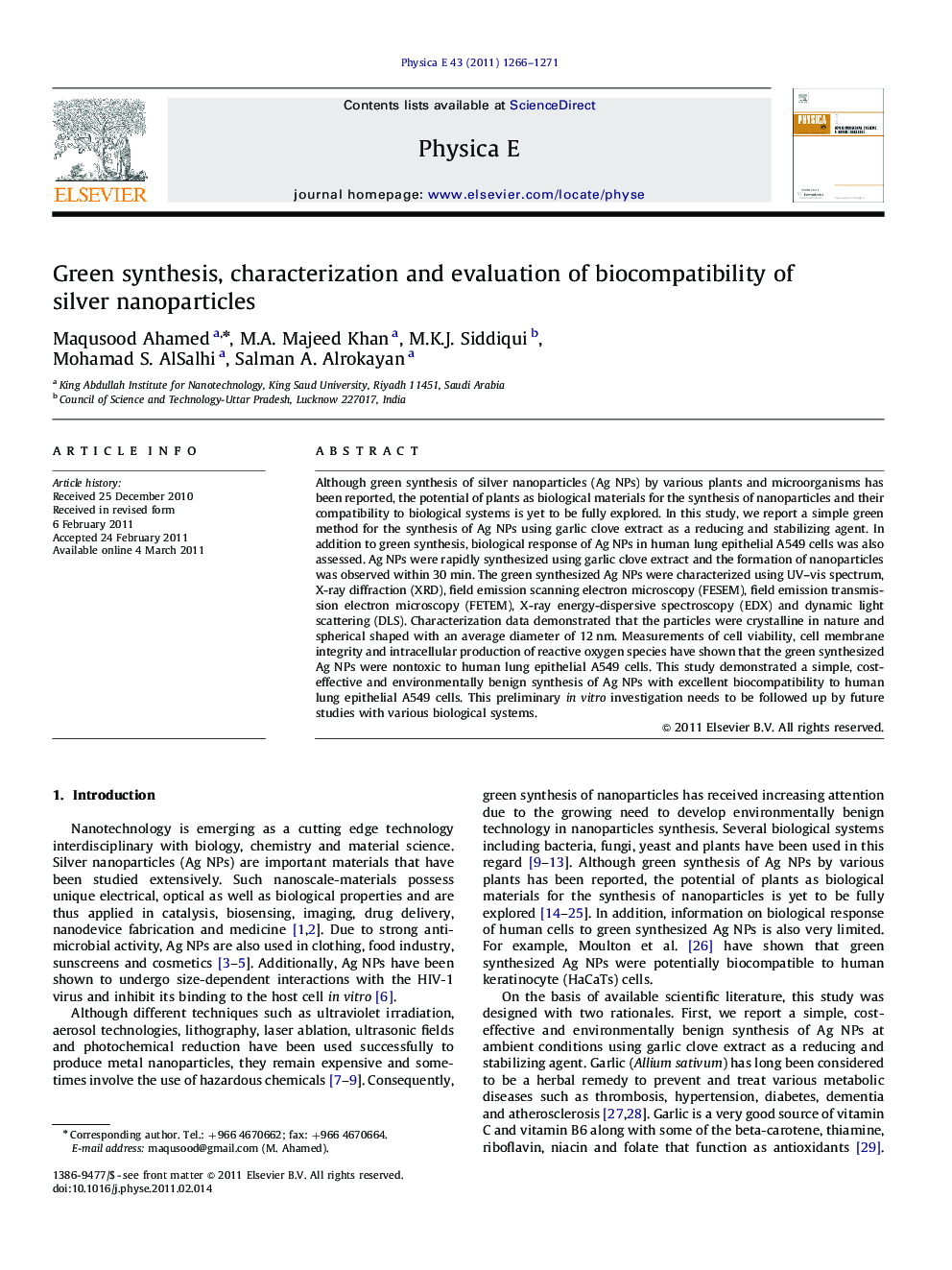| Article ID | Journal | Published Year | Pages | File Type |
|---|---|---|---|---|
| 1546620 | Physica E: Low-dimensional Systems and Nanostructures | 2011 | 6 Pages |
Although green synthesis of silver nanoparticles (Ag NPs) by various plants and microorganisms has been reported, the potential of plants as biological materials for the synthesis of nanoparticles and their compatibility to biological systems is yet to be fully explored. In this study, we report a simple green method for the synthesis of Ag NPs using garlic clove extract as a reducing and stabilizing agent. In addition to green synthesis, biological response of Ag NPs in human lung epithelial A549 cells was also assessed. Ag NPs were rapidly synthesized using garlic clove extract and the formation of nanoparticles was observed within 30 min. The green synthesized Ag NPs were characterized using UV–vis spectrum, X-ray diffraction (XRD), field emission scanning electron microscopy (FESEM), field emission transmission electron microscopy (FETEM), X-ray energy-dispersive spectroscopy (EDX) and dynamic light scattering (DLS). Characterization data demonstrated that the particles were crystalline in nature and spherical shaped with an average diameter of 12 nm. Measurements of cell viability, cell membrane integrity and intracellular production of reactive oxygen species have shown that the green synthesized Ag NPs were nontoxic to human lung epithelial A549 cells. This study demonstrated a simple, cost-effective and environmentally benign synthesis of Ag NPs with excellent biocompatibility to human lung epithelial A549 cells. This preliminary in vitro investigation needs to be followed up by future studies with various biological systems.
Graphical AbstractFigure optionsDownload full-size imageDownload as PowerPoint slideHighlights► Green synthesis of stable and spherical shaped silver nanoparticles of average size 12 nm has been described using garlic clove extract. ► This method is simple, cost-effective and environmentally benign at ambient conditions that have advantages to produce at large scale and economic feasibility. ► Green synthesized silver nanoparticles were non-toxic to human lung epithelial A549 cells evidenced by cell viability, membrane integrity and oxidative stress assays.
